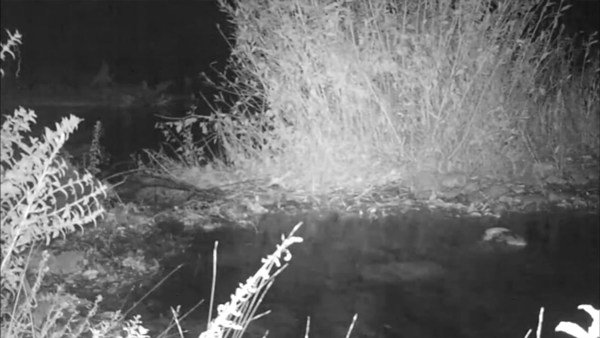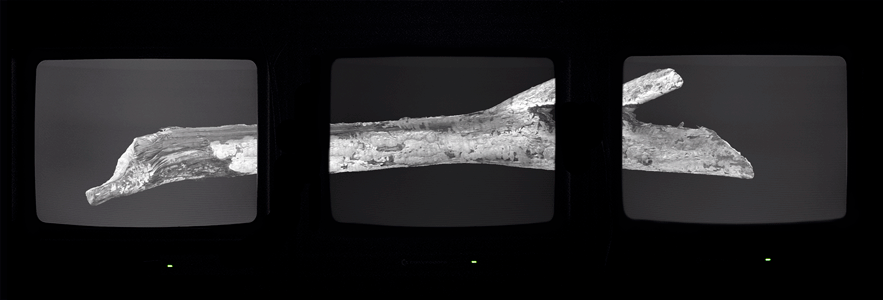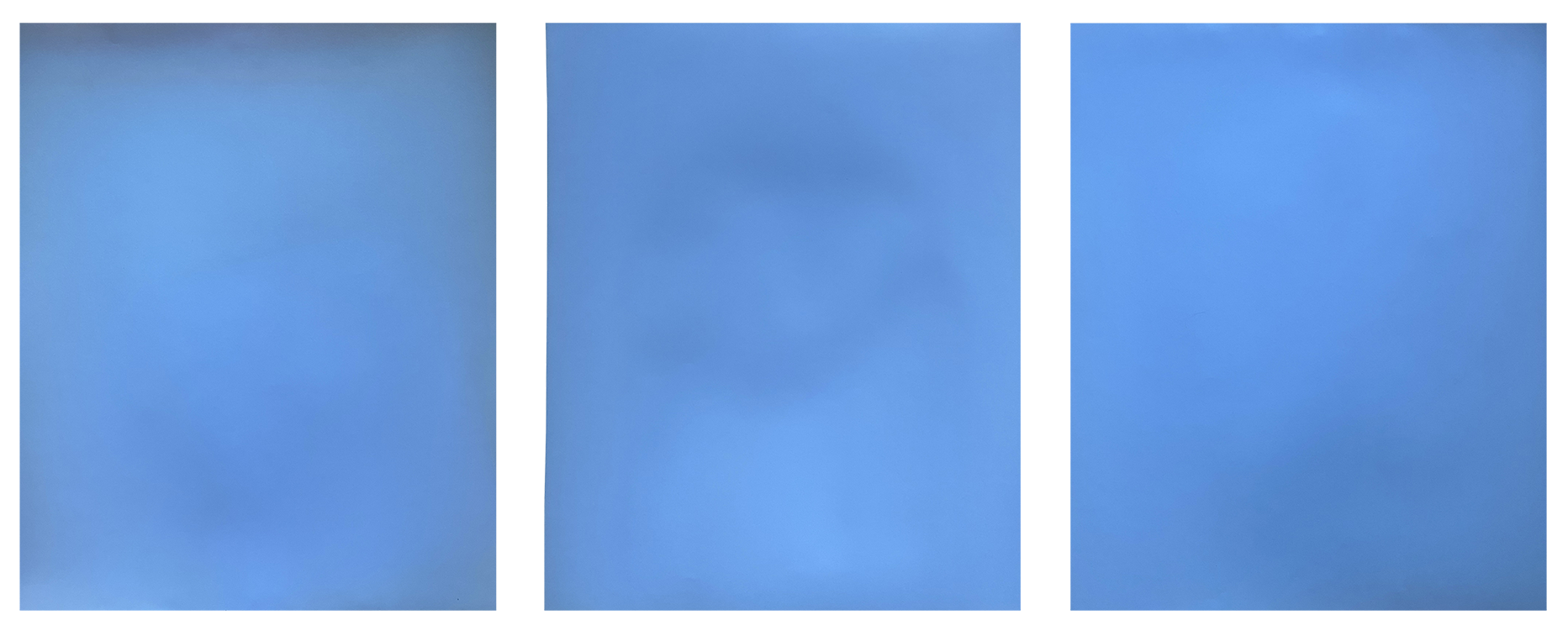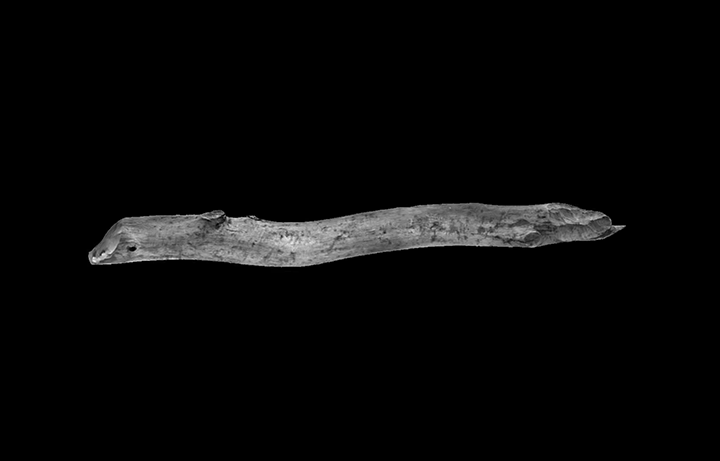
This work aims to terramorphize the human desire for safety and connectivity, through the home engineering practices and materials used by the North American Beaver (Castor canadensis).
I WOULD FIRST LIKE TO ACKNOWLEDGE ALL THE INDIVIDUALS THAT CONTRIBUTED TO, AND THAT WERE RECORDED, IN THEIR OWN ENVIRONMENT; FOR THIS ARTISTIC ENDEAVOUR. ADVOCATION FOR SIMPLE RITUALS OF ACKNOWLEDGEMENT ARE IMPORTANT TO PREVENT THE DEVELOPMENT OF AN UNDESIRABLE MECHANICAL ATTITUDE TOWARD ONE’S WORK WITH NON-HUMAN ANIMALS.

In preparation for this project, I spent the past four years canoeing through the Kawartha Highlands in Ontario, Canada, studying beavers as safety engineers and camping in their environment. Ultimate safety with one another is something that cannot exist as long as humankind continues depleting resources from non-humans and each other. If we do not learn from our fellow earthlings, and cannot find the courage to connect and communicate with each other, we are damned to live in a future of solitude, void of safety, and void of home.

DISRUPT + ORGANIZE + PROTEST
I hold deep admiration for my community in Toronto. The precarious artists, arts workers and activists in all of their various modes of protest. I have chosen to alter this video work in solidarity which will act as a continuous disruption in the space. The red, ‘safe-light’ interruption in the NON-STOP theatre has been crafted to highlight the paradox of building environments of safety amid a backdrop of systemic genocide, ecocide, and the broader destruction and breakdown of communication and collaboration between communities. No space can truly be safe until we actively advocate for others to enjoy that same privilege. Our solidarity must extend to those in need.
Further, I deeply believe in the role of art spaces as platforms for both expression and protest. In embracing this ethos, it's crucial to address the financial support these spaces require, and to uphold transparency within their committees - encouraging an open dialogue with our community. Transparency and accountability are paramount in this endeavor and I embrace the opportunity to hold space for dialogue, dissent, and activism. We must remain vigilant against 'art washing,' where support for the arts is used to mask or justify harmful actions. I feel deep pride for the artists, writers and activists in my community who have spoken out on these issues and have set in motion a wave of change. My hope moving forward is for a continuation of transparency in the arts - and that this body of work focusses contemplation on our shared path toward safeguarding these important community sanctuaries amidst the ongoing state of military escalation and capitalism.
----
The many attempts of humans to re-integrate with nature have been thwarted by inward facing thinking, greed and accelerationism. With the growing human population and increased demand for water and other resources, freshwater ecosystems are under a constant threat. To satisfy these human needs, we counterfeit the practice of damming and channelling water. While the impact on ecosystems is primarily a restorative one when engineered by beavers, it is the opposite when imitated en masse by humans - depleting resources and essentially eliminating the wetland to dry land.
The title, DAMNED, was derived from a quote that my vovó (Brasilian grandmother) used to say, “I did my damnedest”. Myriam Boemer Monteiro de Castro Ramsey immigrated to the U.S.A. from Brasil as a single mother of four, received her Masters and PhD in Romance languages in only three and a half years, while on food stamps, and thrived primarily due to her dedication to building community and holding space for others. This phrase and action embodies her commitment to life, so much so that it was engraved on her headstone after she passed.

We all search for inspiring words, images, and sounds to help describe and shape our experiences in life and how to contribute in a meaningful way. While photographic technology is the root of almost all of my work, at the crux of Damned are concepts and practices rooted in safety, care, collectivity and femininity. How can a dialogue on these modes of existence be had within the turmoil of protest, arts worker precarity, genocide and neoliberalism. There is one thing that my father used to relay to me every morning as a kid, “Wake up and spit, the world’s on fire!” It is important that no matter how daunting or unequipped we may feel, that we get up and do something. Even if it is something as small as drawing a picture, writing down a few words, actively listening or holding space.
This work is divided into multiple allegorical chapters. One part that offers humankind a future of safety in natural cycles, and a second that points towards technological acceleration and eternal damnation.
CHAPTER I.
Safelight
Fogged, analogue Chromogenic prints, 20x24

These prints have been held in a photographic darkroom for just over ten years, enclosed in a dark black bag, only exposed by a red ‘safelight’ through small leaks. Over time the paper has fogged to a soft tranquil cyan. Each print has small differences that speak to the long-term effects of this spectral trauma. The primal yearning for safety resonates as a fundamental human imperative. Yet, true safety eludes us amidst the ceaseless clamor of war and capitalist extraction - no matter how sheltered or distant we may feel from it. It is important to acknowledge that pain on this earth, although unique to each individual, is shared pain. We must not rest until we all can.
CHAPTER II.
Undaunted
Photograms, Gelatin silver prints, 16x20



CHAPTER III.
Non-Stop, or, TV Trees of Technological Cataclysm is a silent, multi-channel video mapped to eight CRT monitors. The ex-situ 3-D scan of a tree once used as nourishment and housing material by the beaver, rotates back and forth, fragmented between screens, losing its meaning and original dialogue through digitisation. Beaver offcuts litter the ground, lying still as a record of non-human terrestrial communities. What implications does the rise of technology have on non-human identities - and how are they recollected and redefined through a data-driven world? The TV Tree reshapes the digital space into fertile ground for embodied environmental knowledge and positions these modes of technological evolution into a rich sensorium for deeper connectivity.

CHAPTER IV.
Damned, a hanging sculpture composed of discarded beaver building materials, is held together with fishing line and motorised to rotate in response to the three-channel audio (my heartbeat, the sounds of a river, and the warning slaps of a beaver tail). For a beaver to build a shelter or home, they must first create a safe environment for themselves by building a dam which protects the shelter from predators. Beavers are a ‘keystone species’ which means they are important precisely because they modify their environment in a way that helps other living organisms thrive. They are a matriarchal society, wherein the eldest female establishes the colony. If she passes without a daughter to take over the role, the safe site is abandoned.
It is common for women to feel unsafe travelling or entering a new space alone, although statistically they are more likely to be harmed by those they trust, in their own homes, than by a stranger. The deconstructed dam structure in the centre of the sculpture, rotates open and shut with the aid of a motor, signalling trust and an openness to build a safe connection with others. This soothing movement, while hopeful, remains stained with black paint, a dark echo of our failed patterned attempts to connect with each other, and on a larger scale, with our environment.